Monarch butterflies always take me back to elementary school. I remember watching and waiting for weeks as bright green caterpillars munched on milkweed plants in our classroom terrarium, then wound themselves overnight into snug chrysalises.
Just writing ‘chrysalis’ makes me feel like I’m 10 again and peering at the dangling little insect sleeping bags, wondering how the crawly caterpillar within would transform itself into the big bright butterfly whose pictures adorned our classroom walls. Perhaps my fascination was partly the childhood kinship I always felt, as a red-head, for other orange-hued creatures. But I think their transformation was also a kind of proof — that the world was magical.
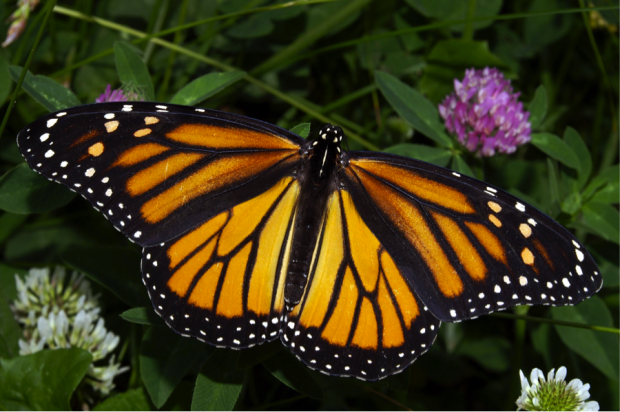
“Monarch in May.” Image credit: Kenneth Dwain Harrelson via Wikipedia. CC BY-SA 3.0. http://bit.ly/1CbXgQf
I was thinking about all this in October when I went to visit Natural Bridges State Beach to preview the park’s annual “Welcome Back Monarchs” day for the Santa Cruz Sentinel. I was there to talk to Martha Nitzberg, the lead naturalist, about preparations for the festival. I also wanted to ask about her hopes and fears for these charismatic insects, whose populations are in decline across North America.
Nitzberg has a round face, twinkly eyes and wide-open smile. Her long brown hair, streaked with lines of gray, fell down over a sea blue tee-shirt featuring sketches of dolphin, otter, and sea lion. She instantly reminded me of so many California park docents I’d met on school field trips growing up. She was friendly and soft-spoken, but passionate.
I expected her to tell me how important monarchs are to their ecosystems – as pollinators, or as food for other animals – and Nitzberg confirmed that the butterflies do play these roles. But she also described another reason to care about monarchs, one that my 10-year-old self would have understood perfectly. “Monarchs are advocates for all the butterflies,” she said. The festival celebrates them not because they are useful, but because their striking appearance makes them charismatic ambassadors for the wonders of the natural world.
Monarch Migration
Monarchs make one of the most epic migrations in the animal kingdom. East of the Rocky Mountains, they travel up to 2,800 miles from summer breeding grounds in the northern plains of the US and Canada to the oyamel fir forests north of Mexico City, where they hibernate. Monarchs west of the Rockies are slightly lazier — or maybe they just have good taste in real estate. Instead of fluttering all the way to Mexico, western monarchs prefer to winter at sites up and down California’s central coast, including the sheltering eucalyptus groves of Natural Bridges. Of course, coming from as far as Washington, Arizona and New Mexico, this is still a journey of hundreds of miles, a long way for a little butterfly.
To get a sense of how massive this journey is in butterfly years, consider that it takes four generations of monarchs to make one round-trip journey. The monarchs arriving at Natural Bridges this fall are the great-great-grandchildren of the butterflies that wintered there last year. Exactly how the monarchs manage this multigenerational feat is still a bit of a mystery, Nitzberg said.
https://www.youtube.com/watch?v=rFPlQK9rn14
Population Crash
Vast swarms of butterflies once made this annual migration. Into the 1990s, citizen science projects estimated that the Mexican winter population was nearly a billion butterflies strong, and California’s population over a million. In recent decades, however, the monarchs’ numbers have dwindled drastically—researchers estimate that only 10% of North America’s monarchs remain. By 2009, Natural Bridges volunteers could find only 1,300 butterflies, down from a peak of 120,000 in 1997.
A big reason for monarchs’ current hardship is that they are picky eaters. (Another cause for the kinship I felt with them as a kid, perhaps.) Monarch caterpillars only eat milkweed, a mildly toxic plant that makes the caterpillars distasteful to potential predators. In recent decades, urban growth and agricultural herbicides like Monsanto’s “Roundup” have decimated milkweed across the country, along with the nectar-bearing wildflowers adult butterflies feed upon. Another major factor has been deforestation, especially in Mexico. Hibernating monarchs rely on large groves to shelter them from winter storms, explained Nitzberg, who likened the trees to an umbrella and a blanket for the dormant butterflies.
As we talked, Nitzberg opened an emergency door at the back of the visitor center to point out some newly planted cypress trees she hoped monarchs would soon shelter in. A flash of tawny gold and black fluttered by. “There you are!” Nitzberg whispered. “We were just talking about you!”
Ambassadors for Nature
I asked Nitzberg to tell me all about the preparations for the upcoming “Welcome Back Monarchs” festival. She said there would be monarch cake and ice cream, a parade and music by her band (the Mostly Mediocre Musical Monarch Mariposas). There would be milkweed seedlings to take home and tips for planting a butterfly-friendly garden.
But events like this are not just to teach kids about butterfly conservation, Nitzberg said: “It’s all very fun to dress up in costume, it’s all very fun to share what we know and what we’re doing, but what really really matters is that they have a chance to be quiet in nature.” When school groups come, she said, “we have them lie down and look up at the butterflies, and you can just see this connection.” The goal, she said, is to give kids the experience of being present and open to the natural world.
At this point, Nitzberg was distracted by a tiny two-year-old girl in cowboy boots who wanted some butterfly stickers from the visitor center shop. I took my leave. As I walked to my car, I suddenly realized that there were monarchs everywhere, flying by me one by one. I walked down a zig-zagging boardwalk into the monarch grove and spent a few short minutes watching scores of handsome butterflies chasing each other through the trees.
Visitors to Natural Bridges this fall will be struck, as they are every year, by the butterflies’ bold beauty. The fluttering of their orange and black wings captures our gaze and makes us really look. The fragility of the monarch reminds us of the brink so many creatures now stand upon. And for those who don’t see, Nitzberg is waiting to point them out.


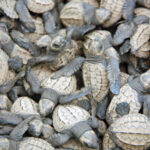
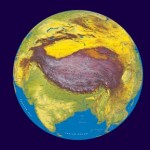
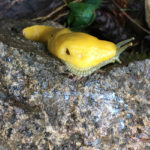

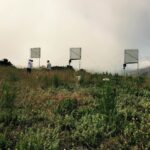
Comments are closed.